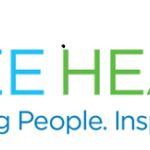 In June, the Medical Group Management Association in conjunction with the National Association of Physician Recruiters released the results of a study demonstrating the growth of hospital-owned practices when it reported that 65 percent of established physicians were placed in hospital-owned practices and such groups accounted for 49 percent of physicians hired out of residency or fellowship.
In June, the Medical Group Management Association in conjunction with the National Association of Physician Recruiters released the results of a study demonstrating the growth of hospital-owned practices when it reported that 65 percent of established physicians were placed in hospital-owned practices and such groups accounted for 49 percent of physicians hired out of residency or fellowship.
Holy Cross Hospital in Fort Lauderdale has added 30 doctors to the Holy Cross Medical Group in the past 14 months. The expansion enables Holy Cross with both a greater geographic dispersion into the community and a diverse physician pool of experts practicing a wide range of specialties including cardiology, internal medicine, oncology and orthopedics.
The statistics cited at the beginning of this article were drawn from 2009 data and I predict next summer’s survey will show an even greater impact of medical groups based on trends that make joining a medical group an attractive option for physicians.
Healthcare reform: Regardless of its final form, healthcare reform will bring greater transparency and Holy Cross, as well as other hospitals with medical groups, offers the flexibility of accepting patients from various payers supported by an infrastructure created to work with managed care plans and insurers. Further, we provide multiple opportunities for physicians in our medical group to receive education on coding and documentation to help ensure appropriate reimbursement.
Education costs: In a commentary in the May 2010 issue of Academic Medicine published by the Journal of the Association of Medical Colleges, authors Eli Y. Adashi, M.D., M.S., and Philip A. Gruppuso, M.D., examined the cost of a medical education citing studies which reported that 87 percent of graduates in 2008 emerged indebted. More than a quarter of graduates had educational debt exceeding $200,000 which will require payments estimated at nine to 12 percent of a physician’s after-tax income over a typical default 10-year repayment period. Early career physicians will continue to be attracted by the guaranteed compensation provided by medial groups.
Collaboration: According to the latest edition of the annual Physician Retention Survey by the American Medical Group Association, again based on 2009 data, leadership opportunities were cited as an important retention factor by mid-career physicians. We strive to ensure the physicians of the Holy Cross Medical Group are partners rather than employees and look to them to be actively involved with the practice.
Flexible Hours: Late career physicians looking to cut back, young doctors desiring to balance work and personal lives and mid-stage physicians who need time with children and elderly parents are attracted to flexible scheduling offered by medical groups. Each of the Holy Cross Medical Group physicians establishes his or her own scheduling with some starting as early as 7 a.m. or staying late until 7 p.m. I tell them, “Give us your desired schedule and we will do our best to implement it.”
Technological advancement: The cost of starting and maintaining a practice including investing in equipment from phones to diagnostic and treatment technology is considerable while participation in a medical group provides access to state-of-the-art technology at the expense of the hospital. For example, Holy Cross is currently in the process of implementing an electronic health record. While the hospital is investing in the capital infrastructure associated with the medical record, the physician investment is the “sweat equity” piece of such a complex endeavor.
Realizing value: From insulating physicians from HR related issues and providing coverage for professional liability to taking custody of the medical records of retiring physicians, medical groups provide tangible value for physicians.
























